Olympic Peninsula wild steelhead—the luminous, iconic objects of our collective dreams—are nearing the bottom of a decades-long slide into oblivion. We are staring into the abyss. On our current trajectory, extinction is not out of the question.
At a recent virtual town-hall meeting, the Washington Department of Fish and Wildlife (WDFW) presented their forecast for coastal wild steelhead runs in the coming season. Here’s what we saw on their graphs: Willapa Bay rivers failed to meet escapement goals for the last five years. The Chehalis tributaries and Humptulips failed in three of the last four years. The mighty Queets failed the last three years. The Hoh, predicted to barely break even this year, hasn’t met escapement in six of the last eleven years. You can see where this is going.
An “escapement goal” is a number calculated to represent the minimum number of spawning fish required to maintain a fishery. It’s worth noting that critics of the current “management” system often consider Olympic Peninsula escapement goals to be too low and arbitrarily determined, but for the purposes of this discussion, let’s take them at face value and use them to assess the current situation.
In spite of the rapidly descending lines shown on WDFW’s graphs, the pressure on Olympic Peninsula wild steelhead continues to increase. Fishing travel agencies promote the glamour of Olympic Peninsula steelhead—even more so now that international travel has been limited by the coronavirus pandemic. The fishing media—books, magazines, television, YouTube and more—glorify these fish. As a result, anglers from near and far continue flocking to the OP in numbers never before seen. One morning not long ago, I arrived at Morgan’s boat ramp on the Hoh at o-dark-thirty to find 19 trailers already in the parking lot, 14 of them sporting Idaho or Montana plates. And yes, I readily acknowledge that my own presence on these rivers contributes to the problem.
Clearly there are crowding issues, and for both the quality of angling experience and to avoid harming the rapidly shrinking number of fish, we need to be talking about how to better manage the recreational fishery.
But the truth is, we shouldn’t even be in this predicament. We are talking about rivers with miles of healthy spawning and rearing habitat, much of it protected in perpetuity within the borders of Olympic National Park; rivers without hydroelectric dams or widespread development; rivers that once sustained significantly higher harvest rates, most likely for more than ten thousand years.
Yet all of these fisheries are struggling, their steelhead numbers spiraling—all except one. Yes, one, single major river system on the entire coast is projected to exceed its escapement goal this year. And not just by a little, either. That river system is the Quillayute, and it’s predicted return is almost 3,400 fish above the minimum escapement goal.
What's different about the Quillayute? Of its four major tributaries, the Sol Duc, is a designated Wild Steelhead Gene Bank, making it the only major river on the coast that does not receive any hatchery supplementation. The Sol Duc will provide a majority of those 3,400 fish. The Dickey, a tiny tributary which also isn't planted with hatchery fish, and the Calawah, which features a hatchery program only at its extreme lower end, will also contribute to the above-escapement-goal numbers. The Bogachiel, on the other hand, with its industrial-level hatchery production and declining wild steelhead run, is projected to fall below escapement.

In reaction to the dismal coast-wide run predictions, the WDFW presented four management options for the upcoming season, including: 1) Early Closure, which would effectively allow fishing on the early-timed wild run, which is the most critically depressed component of the run. 2) Quillayute Only, which would push all fishing effort to a single watershed based on the high return forecast for the Sol Duc. 3) Gear Restricitions, which would limit bait and fishing from a boat in “select waters.” 4) Coastwide Closure of all winter steelhead fishing on the Washington coast.
Should fisheries managers need to close rivers or restrict angling methods to protect the last few fish and prevent extinction, I think most anglers can get behind that. Support it even. Nobody wants to be the one who shoots the last buffalo. I will mourn for the loss of my personal time on the water, for the local guides’ ability to earn their livings, and even more so, if the tribes curtail their fisheries in kind, the loss of cultural practices and thousands of years of heritage.
But closures, restrictions and new regulations should not be confused with “managing” wild steelhead populations. These are short-term Band-Aids, the proverbial rearranging of deck chairs on a rapidly sinking ship, tuning up the fiddle as flames engulf Rome—choose your own cliché—in the face of something much bigger.
Twenty years ago, the WDFW closed the famous spring wild steelhead fishery on the Skykomish to protect the last remnants of a once thriving run. In the years since, they’ve continued their management by dumping millions of hatchery steelhead smolts into the river. Not surprisingly, the result for Skykomish wild steelhead has been no rebound, no season, and nothing that’s improved the outlook since.
The real question we must demand that WDFW ask of itself about the OP is this: Why are we in this situation in the first place? Only then can we begin anything that resembles true management, or for that matter, actual recovery.
Is it mere coincidence that every major river on the OP except the one Wild Steelhead Gene Bank is projected to either barely meet or fall below minimum escapement goals this year? When I asked this question at the town hall, it was the only one dismissed without comment. Apparently the political pressure to avoid giving credence to any kind of critical look at hatcheries is great enough that WDFW won't even talk about it in public
In fact, the main—and only—reason WDFW cited for the plummeting steelhead numbers is ocean conditions. This amounts to a statement of convenience, a shifting of blame to a natural disaster over which the “managers” have no responsibility. While it’s true that ocean conditions have been particularly lousy for steelhead survival for the last five years, and there’s no doubt that has had an impact on overall return rate, we should remember that wild steelhead, with their diverse life histories and genetics have adapted to and survived natural disasters for millions of years. In contrast, our inbred, domesticated hatchery fish, as well as the genetically compromised offspring that result from hatchery fish spawning with wild fish, struggle under adverse conditions.
Combine these facts with a quick look at the Skagit, which sustained harvest—harvest—of up to 30,000 wild steelhead every year, for decades, then started its rapid downward spiral once the hatchery program was put in place. When the hatchery was finally closed, the resulting rebound produced enough wild fish to open the catch-and-release season for the first time in years.
The stories are remarkably similar on the Toutle River after Mt. St. Helens. And the Eel before and after the hatchery. And throughout the entire state of Montana. And on and on.
While hatcheries may not be the sole reason for declining returns of wild steelhead on the OP, there is a mountain of published, peer-reviewed scientific evidence that demonstrates the negative impact of hatchery fish on wild populations. So far, our “managers” have chosen to ignore this scientific evidence, and worse, often respond to plummeting fish populations by increasing hatchery production.
If history is to be our guide, the rivers of the Olympic Peninsula are capable of producing more than enough fish to sustain both a tribal fishery and a robust catch-and-release recreational season. That they are failing to do so says more about the management of this resource than anything else.
One thing is certain: what we’ve been doing isn’t working. So why not try something different? How about closing the hatcheries and finding out if that’s the real problem? The case of the Sol Duc—and all the other fisheries listed above—offer compelling evidence that doing so could be the key to the return of thriving steelhead runs and harvestable numbers of wild fish. Why won’t WDFW consider this? Could it have something to do with the fact that hatchery operation represents a significant portion of WDFW’s annual budget? Couldn’t we reallocate the hatchery funding to habitat restoration, employ the same number of workers, and actually create real change for the better?
There are significant hurdles to overcome on the way to an actual paradigm shift on the Olympic Peninsula: Treaty obligations with sovereign nations, the needs of guides and outfitters, the legions of anglers who want steelhead for the smoker—these are all seemingly satisfied by the hatchery programs. But are they? In recent years, as the wild steelhead population crashed, the hatchery returns have also diminished as the inevitable result of domestication and genetics degraded by inbreeding.
When both are gone, who will be satisfied then?
I hope, for all of us who love Olympic Peninsula wild steelhead—the tribal fishermen, the working guides and outfitters, the fly and gear anglers alike—that WDFW and their tribal co-managers take a hard look at the situation and ask themselves that big scary question: Why are we in this situation? and then, propose an answer that makes an investment in sustainable, long-term improvement. In other words, actual management. Otherwise, we’re just pushing a few deck chairs starboard, dragging a few more to the bow, and ignoring the rapidly rising water that’s just about to reach our necks.
This story was updated to more accurately reflect the above-escapement numbers for the Quillayute River system.




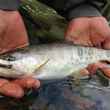
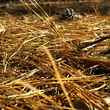

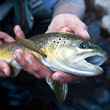



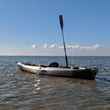










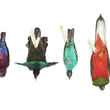



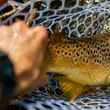
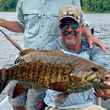

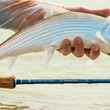
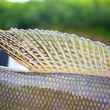

Comments
Jon replied on Permalink
As usual, Dylan nails it again. When the Elwah dams came down, the last unadulterated steelhead in the lower 48 were behind it. As Dylan says, we know that every river with a hatchery produces less fish year over year. So, what did they do? Build two hatcheries before the dam was even down. Makes great press. Shitty for the actual fish. I was on the Hoh and Solduc recently, watching the gear chuckers pull plugs thinking "this will happen until the fish are gone, if they aren't already." Of the 20 boats on the river, I didn't see anybody touch a fish.
Bob Ball replied on Permalink
A lot of good points, but I think you've missed a really big point in the hatchery discussion when talking about the Sol Duc, not only did it receive Chambers fish for some time, but for nearly 30 years the Snider Program supplemented in there. It has only been a Wild Gene Bank for a short while.... So please don't try to present the lack of hatchery production in the last few years as to why it has maintained as it has. If anything, it has remained the healthiest in the system, especially in regards to run timing distribution.
Tom Hutchison replied on Permalink
Thank you for this article Dylan and for illuminating the problem.
Two simple management solutions can end the decline of wild steelhead and trout: end retention of all native trout in rivers and end hatchery steelhead production. Any place where you can retain a wild rainbow there’s a good chance that rainbow is actually a juvenile steelhead if the river connects to the ocean. Another problem with hatcheries along with the numerous biological issues is they increase and concentrate angling pressure with wild fish as a bycatch.
Ultimately hatcheries promote to ignorance of the degradation of watersheds throughout the range of salmonids. Even the OP rivers have logging and development in the lower reaches. Dams, logging, development, and floodplain infrastructure have erased giant swaths of habitat but we continue to spend millions on hatcheries while we should be using that money fixing the root cause of the problems through restoration and barrier removal. We need the WDFW to start taking a biological and ecological approach to management instead of the backwards industrial model of salmon management that is proven to fail.
Matt replied on Permalink
You say there is a "mountain of evidence" against hatcheries. Can you share some of those resources and studies?
Swing replied on Permalink
You can start here. Research is noted in parentheses. Tons of other information is available via search engine. https://wildfishconservancy.org/what-we-do/advocacy/steelhead-hatchery-r...
All that info and data is nice, but you don't really need any of that it...just think it through for yourself. What would happen if--after decimating the wild salmon and steelhead populations up and down the entire West Coast in the last 100 years, mostly by way of dams and industrial fishing--every year we also released millions of mostly-genetically-identical fish into any given river and actually almost all of them?
Tom Hutchison replied on Permalink
Thank you for this article Dylan and for illuminating the problem. Two simple management solutions can end the decline of wild steelhead and trout: end retention of all native trout in rivers and end hatchery steelhead and trout production. There’s a good chance wild rainbow trout retained by anglers are juvenile steelhead if the river connects to the ocean. Ultimately, hatcheries promote ignorance of the degradation of watersheds throughout salmonids’ range. Even the OP watersheds have logging and development in the lower reaches. Dams, logging, development, and floodplain infrastructure have erased giant swaths of habitat but we continue to spend millions on hatcheries. Instead, that money should be used to fix the root cause of the problems through restoration and fish passage barrier removal. We need the WDFW to start taking a biological and ecological approach to management instead of the backwards industrial model that is proven to fail.
John Brewer replied on Permalink
I shared this article with my favorite Hoh River steelhead guide. His reaction: "It's not complicated at all. Just a natural progression of mis-manageent by the extinction for profit industry. 1. Eliminate fish hatcheries.2. Make hook and line fishing catch and release. 3. Increase the industrial drift net fishery in accordance with the foregone opportunity clause of the Boldt Decision which allows the tribes to catch the sport fishing share of the run if the sport fishers don't and, 4 Shut fishing down because of ocean conditions, a catch-all term used as an excuse for extinction driven management policies. 5.Build log jams and plant trees as an excuse for salmon restoration. The hatch magazine fantasy completely ignores what is happening on the river. The banks of the lower Hoh River are currently littered with abandoned gill nets. The log jams are full of them. I wonder if they impact wild steelhead?"
John Brewer replied on Permalink
UPDATE -- restrictions on Washington state coastal steelhead fishing announced Wednesday, Dec. 9. Here's a followup with all the details from outdoors writer Michael Carman at the Peninsula Daily News in Port Angeles, WA --- https://www.peninsuladailynews.com/sports/outdoors-steelheaders-left-ban...
T Somes replied on Permalink
Extremely well written and accurate. If I had to pull our two lines from the whole piece?
"One thing is certain: what we’ve been doing isn’t working. So why not try something different?" This is the question that has been driving me nuts for over a decade. Einstein's oft quoted definition of insanity? "Doing the same thing over and over and expecting a different result." IT'S TIME TO TRY SOMETHING DIFFERENT. We've even had a plan to do so (with state and fed approval) for over a decade, but it's never been implemented. WDFW has a budget crisis right now. How about we close a few more hatcheries and just see what happens?? I stopped fishing for steelhead 3 years ago- and I love fishing for steelhead- b/c I don't want to be the one to shoot the last buffalo. We need to cut the fishing pressure waaaaay back and give these fish a chance!
Pages